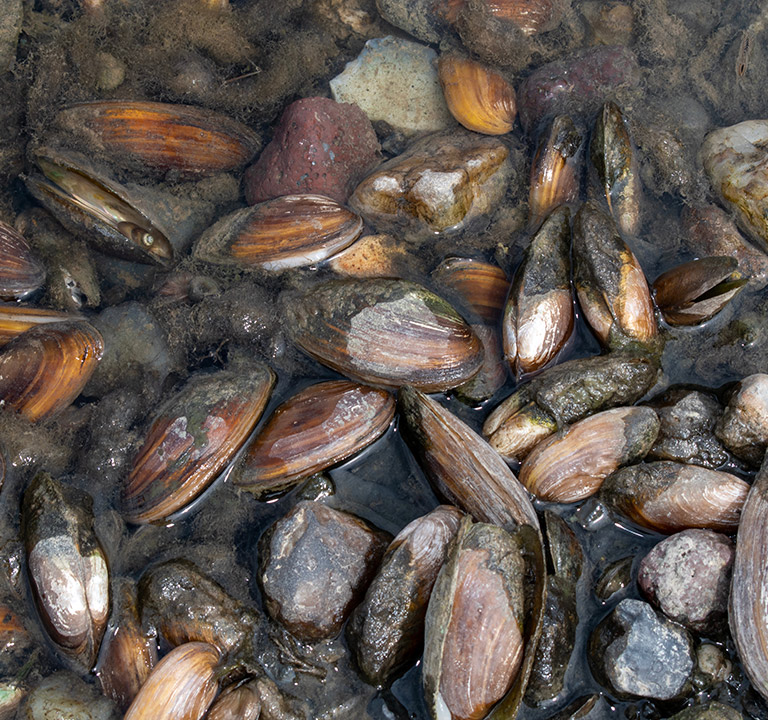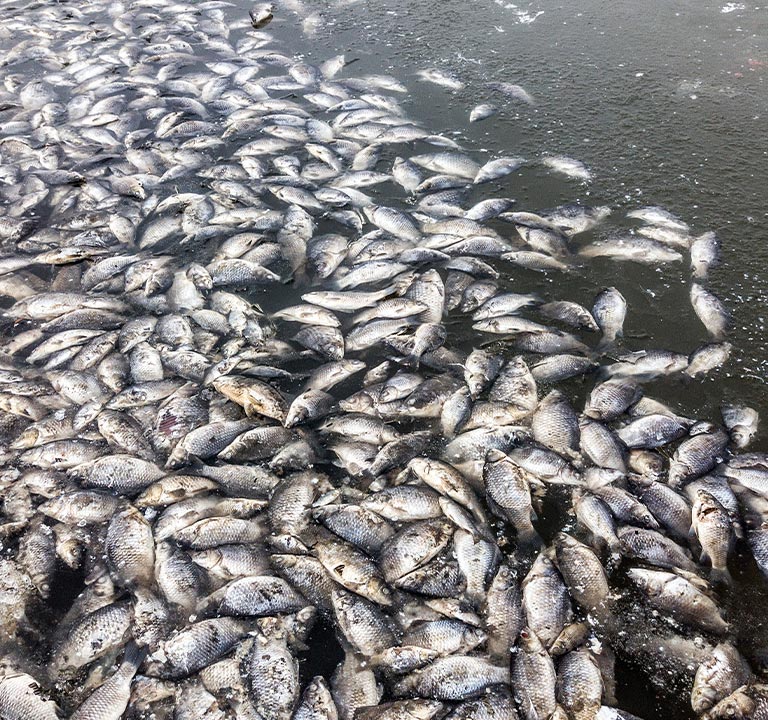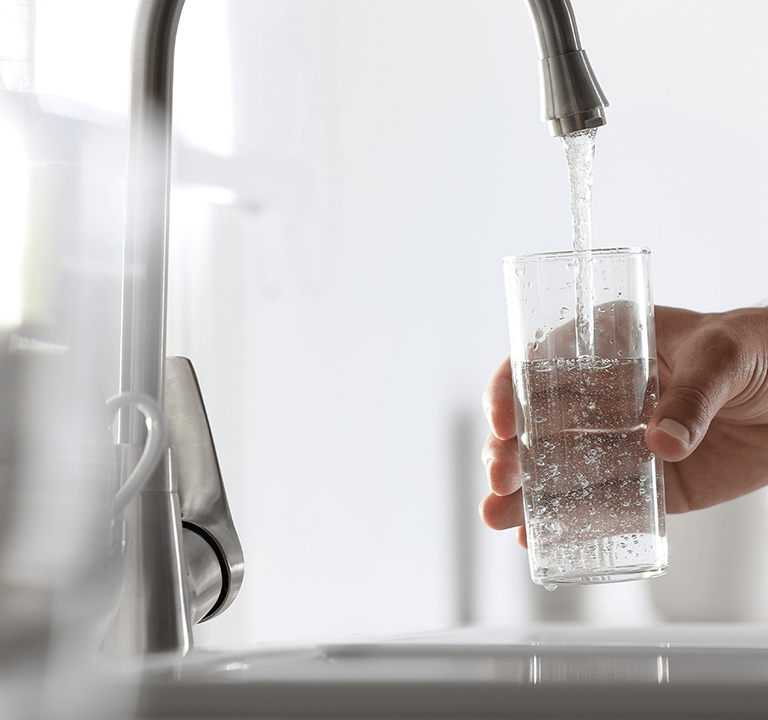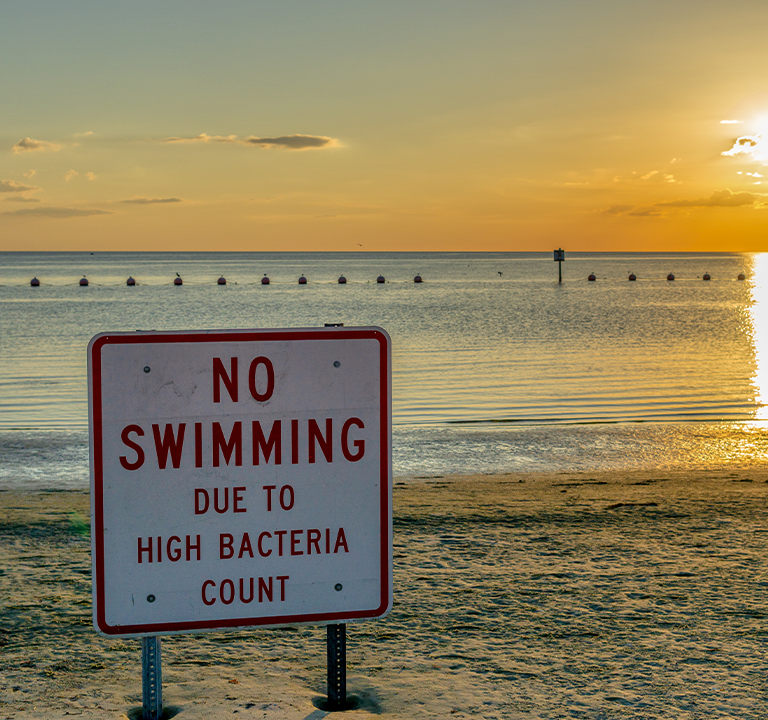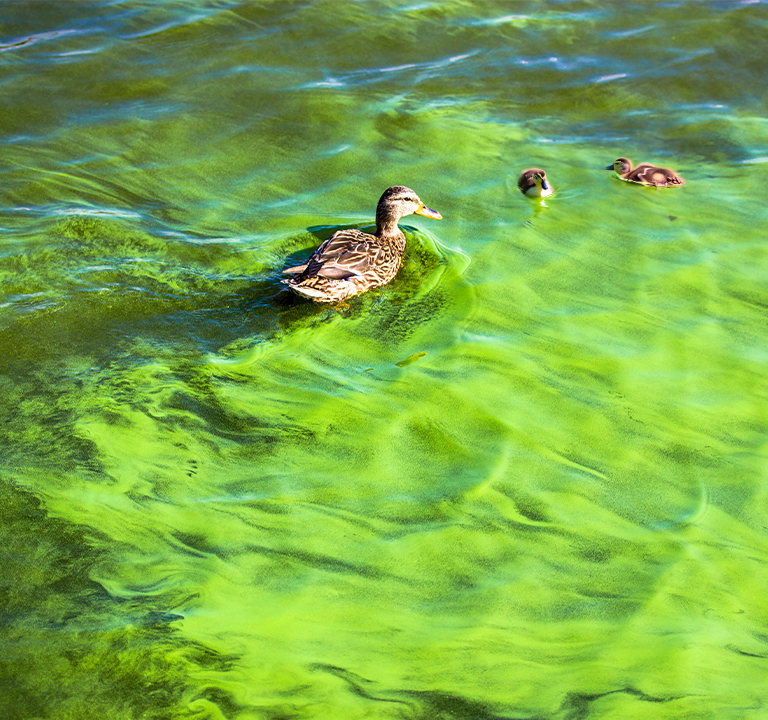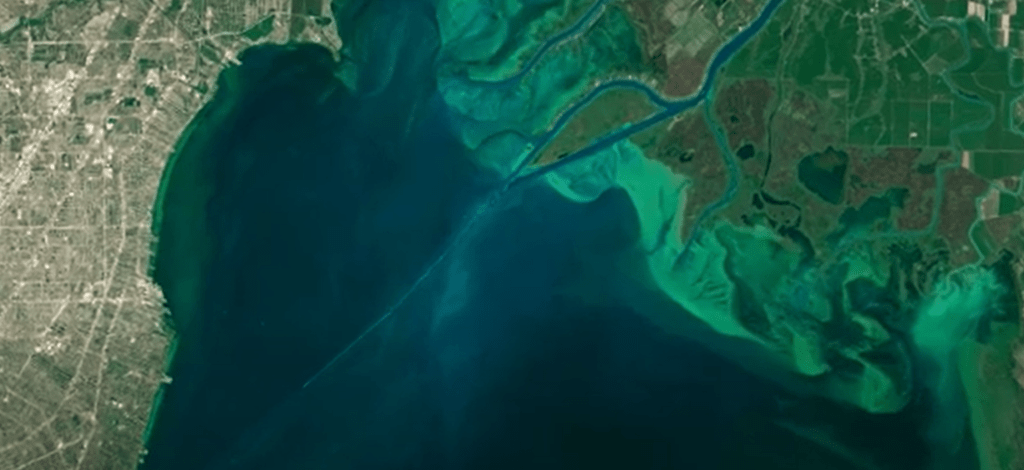What is nutrient pollution?
Naturally occurring nutrients (primarily nitrogen and phosphorus) at normal, balanced levels in lakes, rivers and other bodies of water are healthy, as they support the growth of algae and aquatic plants. These plants in turn provide food and habitat for fish, shellfish, and smaller organisms that live in the water. Too much nitrogen and phosphorus create what is referred to as nutrient pollution.
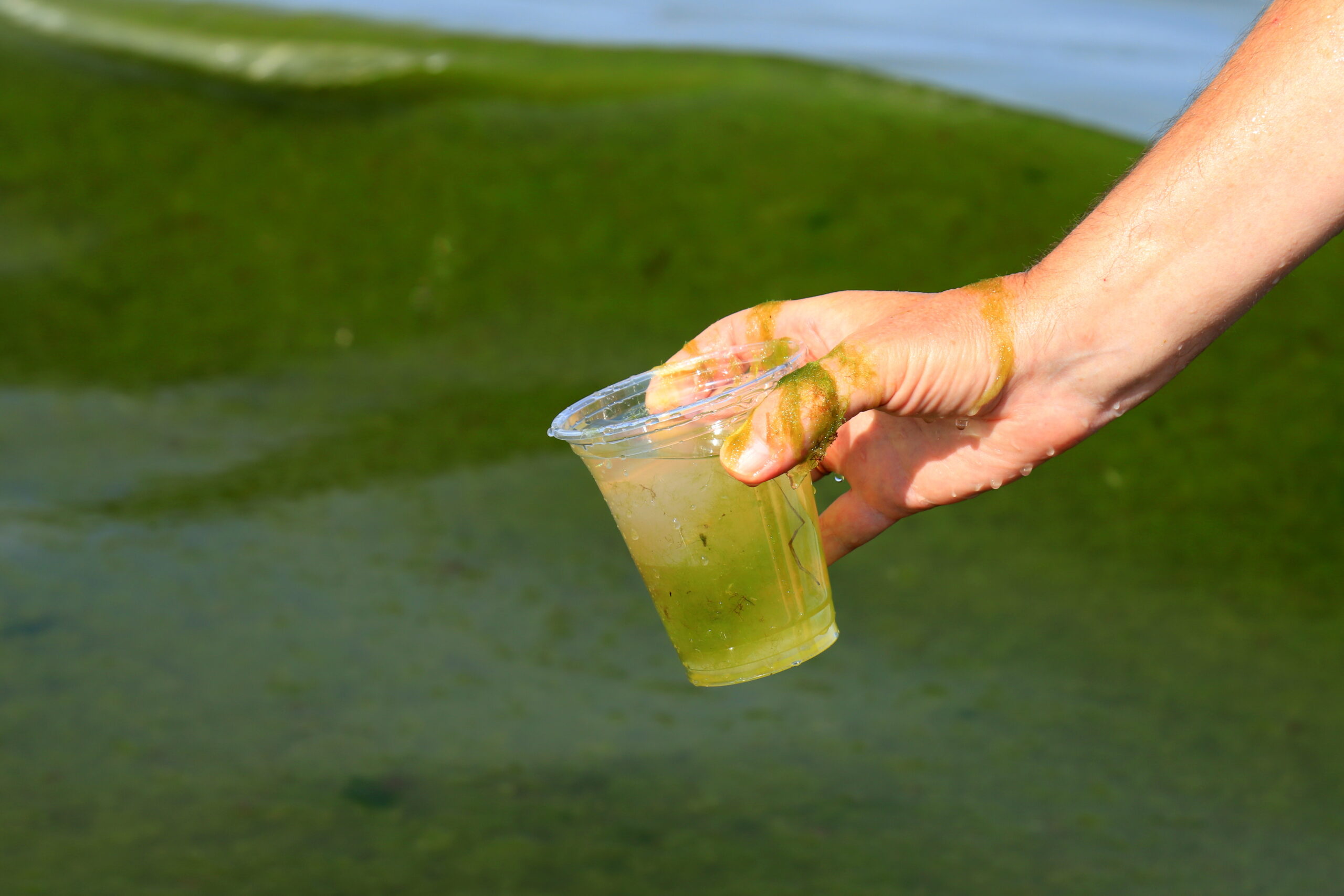
aquatic life and ultimately human health.
Why is nutrient pollution a problem?
Nutrient pollution, created by excessive levels of nitrogen and phosphorus in bodies of water, typically originates from fertilizer or waste runoff from factory farming, and industrial and municipal wastewater treatment plants. These increased levels of nutrients can deteriorate water quality, as algae can grow rapidly, reducing or even eliminating the oxygen supply and reducing the exposure to sunlight. Nutrient pollution has been exacerbated by climate change, with increased water temperatures (more conducive to algae growth) and bigger storms (heavier rainfall leading to increased erosion leading to a greater influx of nutrients from the runoff). Nutrient pollution leads to habitat damage, loss of aquatic life, drinking water contaminated with toxins and bacteria, and ultimately negative impacts on human health.
Be Aware of Water
As much as wastewater treatment plants have been identified as a critical solution for implementing technologies aimed at addressing nutrient pollution, there are personal choices that everyone can make that can help to minimize nutrient pollution in our watersheds. According to the National Oceanic and Atmospheric Administration (NOAA) in the United States, “watersheds are a land area that channel rainfall and snowmelt to creeks, streams, and rivers, and eventually to outflow points such as reservoirs, bays, and the ocean.” As a result, anything that happens in your backyard will directly impact the watershed within which you live. To minimize your own nutrient pollution footprint (NPF), be more aware of the water in your world – in your backyard – and make personal choices to help address nutrient pollution:
- Proper disposal of animal waste – Whether it’s a hog farmer with 500 hogs or the neighbor down the street walking their dog in the morning, proper disposal of animal waste is critical to addressing nutrient pollution. Animal waste that isn’t properly cared for will get washed into the watershed during the next heavy rain, adding unwanted nutrients to creeks, streams, rivers, and lakes.
- Minimize or eliminate fertilizer use at home – Fertilizers for residential use – much like that used for commercial farming operations – enhance plant growth by adding nutrients like nitrogen and phosphorus to the soil. Run-off during heavy rains will carry these excess nutrients away from the residential properties and into the local waterways via the storm drains. See #6.
- Car wash – Commercial car washes are required by law to take care of their dirty water, which leads to less environmental impact in processing the water. Washing a car in a residential neighborhood and not the car wash means the run-off you are producing – with all of the soap and grease and grime – goes into the street, into the catch basin, and into the local waterway.
- Leaves and grass clippings – Mulching leaves and grass clippings into the lawn will help add natural nutrients to the soil. Raking leaves and clippings to the curb or into the catch basin – or blowing them down the street – increases the need to add fertilizer to the lawn (see #2) but also increases the debris that ends up in the storm sewer.
 Septic systems – Inspect septic systems regularly, to ensure that they are working properly and not overflowing. Schedule system pumping annually, or as recommended by the local septic service provider.
Septic systems – Inspect septic systems regularly, to ensure that they are working properly and not overflowing. Schedule system pumping annually, or as recommended by the local septic service provider.- Native plants – Native plants, shrubs, and trees require less maintenance, less water, are not invasive, prevent erosion, and help to keep a natural balance to the ecosystem. All of these attributes have a positive impact on nutrient pollution in the local watershed.
- Cleaning solutions – Most household cleaners, soaps and detergents contain phosphates. Choosing phosphate-free products help to minimize high concentrations of phosphorus in the water cycle, minimizing nutrient pollution in the wastewater treatment plant effluent.
Support local utilities
Wastewater treatment plants (WWTP) often suffer “NIMBY” persecution (not in my backyard) from area residents. It’s important to recognize, however, the critical functions they perform as a pillar of a modernized society. As such, they depend on and deserve the support and funding from local residents and municipalities.
As efficient and effective as wastewater treatment plants have become, nutrient pollution is still an all-too-common occurrence in communities around the U.S. and around the globe. From the complex reservoir systems of our biggest cities to the vast watersheds of our rivers, streams, and estuaries, nutrient pollution will continue to impact the water in our world. However, making different personal choices – and being aware of the water in your world – will have sustainable impact well into the future


